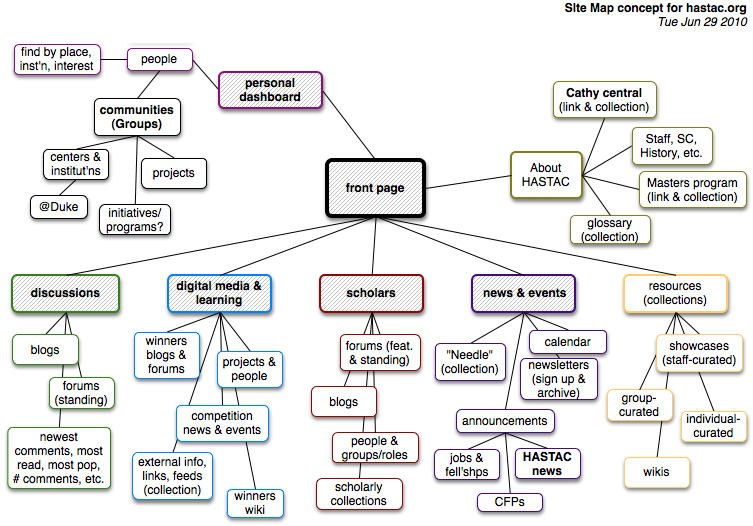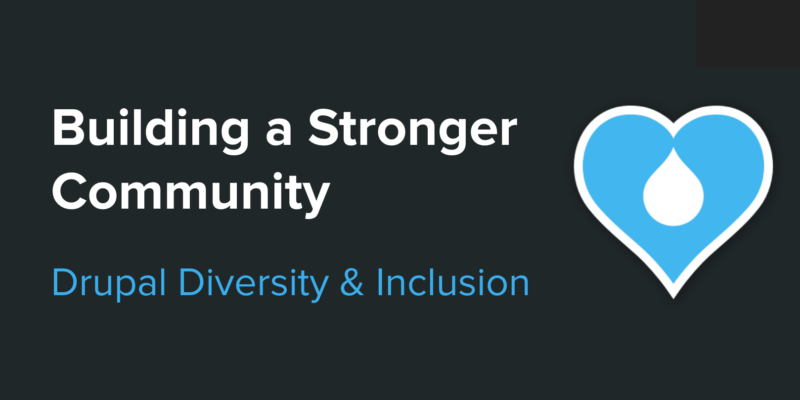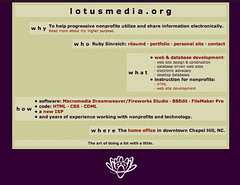
I feel a little like I just gave birth to another baby, but thank goodness it took less than 9 months to gestate and was a lot less painful to deliver!
Less than one year after starting my job at HASTAC and then immediately overseeing the re-launch of hastac.org, I realized that our site would have to be re-built entirely from scratch. I spent this summer working with my colleagues to create a clearer vision and a plan for a complete overhaul of the site. Here’s the request for proposals: http://www.hastac.org/drupal-rfp-2010. I’m really proud of this document as it shows a solid foundation, a forward-thinking vision, and a practical strategy for how to make best use of our great ideas, the Drupal platform, and a brilliant and engaged community of members.
HASTAC Director Cathy Davidson is a deep and complex thinker. Here’s some of what she had to say about the RFP on her blog today:
If you are not a programmer but are interested in how you build up a successful virtual organization, a network of networks, the rfp is a lot more interesting than you might think. It’s not just about half a million page views a year (although we’re proud enough of that!), it is about how a distributed, collaborative team converges into a virtual site and ends up with a whole greater than the sum of many, many, MANY disparate parts. VC’s out there, listen up! There are lessons here.
Ruby’s method was fascinating. I’ve been involved with building three previous websites and no one has organized our group meetings towards the rfp conceptually before. I was skeptical at first, although I loved the conversations we generated from talking about what we envisioned for HASTAC and how we saw the website as the one portal through which you could extend outward through the network, and reach inward too, bringing what ever you and your institution had to offer back to the site where it would likely receive more attention than it could on its own.
It turned out (I’m not sure we would have found this out any other way) that we all possessed different kinds of gifts when asked to conceptualize a virtual network. Fiona Barnett, Director of the HASTAC Scholars, turns out to be a genius at formulating precise kinds of audiences and how they might or might not be best represented or welcomed to the site (yes, we’ve always known Fiona’s a genius but this was yet another manifestation). I tend to be a “both/and” kinda gal, so found myself over and over saying, well, it’s one kind of Venn diagram if you think about it this way, but it’s this other kind when you think . . . This can make developers crazy but Ruby somehow managed to capture the key point that we need FLEXIBILITY AND SIMPLICITY more than anything else.
So that’s the process on the way to Ruby’s eloquent, elegant, and detailed rfp.
– http://www.hastac.org/blogs/cathy-davidson/what-exactly-network-networks
Now that I’ve crossed that finish line, I’m going on vacation with my family for two weeks. When I get back I’ll be gearing up for the next race: actually managing the creation of our new web site.
UPDATE: Download the RFP as a PDF (5 MB).








 This week I have been in geek heaven. Along with the rest of the Duke-based HASTAC staff, I have been testing the
This week I have been in geek heaven. Along with the rest of the Duke-based HASTAC staff, I have been testing the 